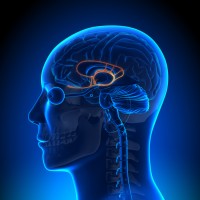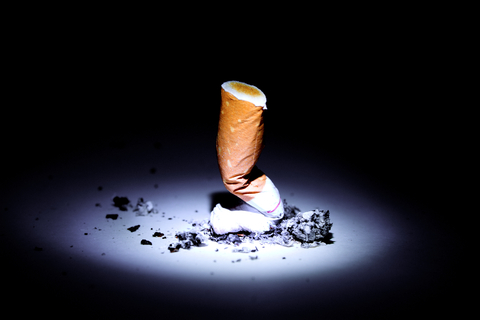Marijuana Addiction & Rehabilitation
Marijuana is one of the world’s most commonly used illegal drugs, and the most commonly used illicit drug in the United States. There are approximately 300 million users worldwide and 28 million users in the United States (Diaz, 1997).
Marijuana comes from a plant called “Cannabis sativa.” The chemical in this plant that produces the altered states of consciousness is called “delta-9 tetrahydrocannabinol” or “THC.”
Marijuana contains more than 400 chemicals, including most of the harmful substances found in tobacco smoke. Smoking one marijuana cigarette deposits about four times more tar into the lungs than a filtered tobacco cigarette.
The risk of using cocaine is estimated to be more than 104 times greater for those who have tried marijuana than for those who have never tried it.
Smoking marijuana can injure or destroy lung tissue. In fact, marijuana smoke contains 50–70% more of some cancer causing chemicals than does tobacco smoke. Marijuana affects various systems in the body: bloodshot eyes, elevated blood pressure, and increased heart rate. Long-term use affects the brain, the kidney and the heart.
Effects of Marijuana on the Brain
Marijuana is neurotoxic. THC acts on “cannabinoid” receptors which are found on neurons in many places in the brain. These brain areas are involved in memory (the hippocampus), concentration (cerebral cortex), perception (sensory portions of the cerebral cortex) and movement (the cerebellum, substantia nigra, globus pallidus). When THC activates cannabinoid receptors, it interferes with the normal functioning of these brain areas. In low to medium doses, marijuana causes:
- relaxation
- reduced coordination
- reduced blood pressure
- sleepiness
- disruption in attention
- an altered sense of time and space…a good reason not to drive or operate machinery while under the influence.
In high doses, marijuana can cause:
- hallucinations
- delusions
- impaired memory
- disorientation
Long term users experience problems with memory, difficulty concentrating, paranoid thinking and progressively decreased coordination.
Scientists have known for a long time that THC interacted with cannabinoid receptors in the brain, but did not know why the brain would have such receptors. They thought that the brain must make some kind of substance that naturally acted on these receptors. In 1992, they found the answer…anandamide. Anandamide is the brain’s own THC (just like “endorphin” is the brain’s own morphine). Still, scientists are not sure what the function of anandamide is in the normal brain.
The effects of marijuana start as soon as 1-10 minutes after it is taken and can last 3 to 4 hours or even longer. Experiments have shown that THC can affect two neurotransmitters: norepinephrine and dopamine. Serotonin and GABA levels may also be altered.
Researchers have found that THC changes the way in which sensory information gets into and is acted on by the hippocampus. The hyppocampus is a component of the brain’s limbic system that is crucial for learning, memory, and the integration of sensory experiences with emotions and motivations. Investigations have shown that THC suppresses neurons in the information processing system of the hippocampus. In addition, researchers have discovered that learned behaviors, which depend on the hippocampus, also deteriorate.
Effects of Marijuana on the Lungs
Someone who smokes marijuana regularly may have many of the same respiratory problems that tobacco smokers have. These individuals may have daily cough and phlegm, symptoms of chronic bronchitis, and more frequent chest colds. Continuing to smoke marijuana can lead to abnormal functioning of lung tissue injured or destroyed by marijuana smoke.
Regardless of the THC content, the amount of tar inhaled by marijuana smokers and the level of carbon monoxide absorbed are three to five times greater than among tobacco smokers. This may be due to marijuana users inhaling more deeply and holding the smoke in the lungs.
Treating Marijuana Addiction
The most common difficulty encountered with marijuana addiction is its wide social acceptance and denial about its toxic effect. Most people who smoke marijuana on a regular basis for many years do not recognize that they have an addiction problem for the following reasoning:
- There is no reason to quit marijuana, since it is not perceived as a dangerous or unhealthy drug.
- There is no reason to quit, they did not try and did not experience difficulty trying to quit.
- Everybody else is using marijuana and there is a social incentive to use.
- Marijuana is better than tobacco.
However, marijuana is addictive. The signs are:
- Needing the drug to get started with the day.
- Relying on the drug to maintain a certain level of energy.
- Depending on marijuana for mood changes.
Harmful Marijuana Chemicals
Marijuana is the most commonly used illicit drug in the United States. Marijuana contains more than 400 chemicals, including most of the harmful substances found in tobacco smoke. Smoking one marijuana cigarette deposits about four times more tar into the lungs than a filtered tobacco cigarette.
The risk of using cocaine is estimated to be more than 104 times greater for those who have tried marijuana than for those who have never tried it.
Destruction of Lung Tissue
Smoking marijuana can injure or destroy lung tissue. In fact, marijuana smoke contains 50–70% more of some cancer causing chemicals than does tobacco smoke.
Brain Deterioration
Researchers have found that THC changes the way in which sensory information gets into and is acted on by the hippocampus. This is a component of the brain’s limbic system that is crucial for learning, memory, and the integration of sensory experiences with emotions and motivations. Investigations have shown that THC suppresses neurons in the information processing system of the hippocampus. In addition, researchers have discovered that learned behaviors, which depend on the hippocampus, also deteriorate.
Effects of Marijuana on the Lungs
Someone who smokes marijuana regularly may have many of the same respiratory problems that tobacco smokers have. These individuals may have daily cough and phlegm, symptoms of chronic bronchitis, and more frequent chest colds. Continuing to smoke marijuana can lead to abnormal functioning of lung tissue injured or destroyed by marijuana smoke.
Regardless of the THC content, the amount of tar inhaled by marijuana smokers and the level of carbon monoxide absorbed are three to five times greater than among tobacco smokers. This may be due to marijuana users inhaling more deeply and holding the smoke in the lungs.
Our Natural Treatment for Marijuana Addiction
For those who want to be free from marijuana dependence and its negative health effect on physical and mental health our natural detoxification program offers a solid basis for a lifestyle change. From their personal experience, abusers know the natural laws of a “high” followed by a “low”, and how implacably a high must be followed by a low and that the search for a high only leads to using more marijuana.
We will explore the validity of believing in the search for a high through a mind-altering substance, its benefits and inconvenience. As an antidote we promote substitute feel good activities such as exercise, meditation, yoga or other breathing techniques and creative occupations.
The length of time for best recovery success varies greatly. Research shows the best results for a three month residential stay.
Specific Addictions & Rehabilitation
- Alcohol Abuse
- Benzodiazepines / Tranquilizers / Muscle Relaxers (Xanax, Valium, Klonopin, Ativan, Ambien, Lorazepam)
- Caffeine
- Cocaine
- Hallucinogens / LSD / PCP
- Food Addiction
- Marijuana
- Methamphetamine / Ecstasy / Party Drugs
- Opiates / Opioids / Painkillers (OxyCotin, Vicodin, Norco, Dilaudid, Methadone, Oxycodone, Heroin)
- Smoking / Nicotine / Tobacco
- Sex Addiction
- Sugar
Now is the Time to Mind Your Body & Mend Your Mind
HAWAII NATURAL DRUG REHABILITATION & RAW DETOXIFICATION CENTER
Holistic Natural Residential Rehabilitation Programs for freedom from addiction to legal and illegal substances – drawing from Naturopathic and Detoxification medicine, Behavioral and Psychodynamic Therapy approaches, Stress Reduction Techniques, Meditation, Yoga and Spiritual Practices. We take only a small amount of clients, and our programs are individually designed. Our use of the ocean, the recreational activities & natural approaches facilitate recovery.
Natural Drug and Alcohol Detoxification with Raw Foods
What Others Experienced
Perhaps most valuable was the attentive natural medical support; I feel all of the above could be wasted without it. Dr. Baylac studied my case thoroughly, ordered tests that revealed underlying issues that MD’s have overlooked for years, and tweaked my customized supplement routine and IV therapy support as needed. Though drug withdrawals and food cravings were nursed to minimal discomfort (massages, teas, baths & lots of love helped), my first few weeks of detox were rough with mood instability, psychadellic flashbacks, nightmares, and occasional vomiting. I was probably a tough customer to restore to sanity, but because of her intuitive nurturing and sincere passion for helping, I was able to open up and trust Dr. Baylac and her phenomenal team to guide me to serenity.
I stayed at the Retreat for 6 weeks and this time truly changed my life. I had surgery and became addicted to opiates. One thing led to another, and before I knew it seven years of my life went by on drugs. Methadone was my drug of choice and I had tried five ‘detoxes’ and two rehabs to kick this drug. Nothing seemed to work. I suffered hard at these traditional rehabs. But I was surrounded by negative people and bad food. At the Hawaii retreat it was almost the opposite. Yeah, I went through a rough detox but the food, saunas, enemas, hydrogen peroxide baths, massages and tons of other things made it bearable. I fully detoxed from methadone and it was not as painful as it had been in the past. I’m really grateful that I had the opportunity to come here.





